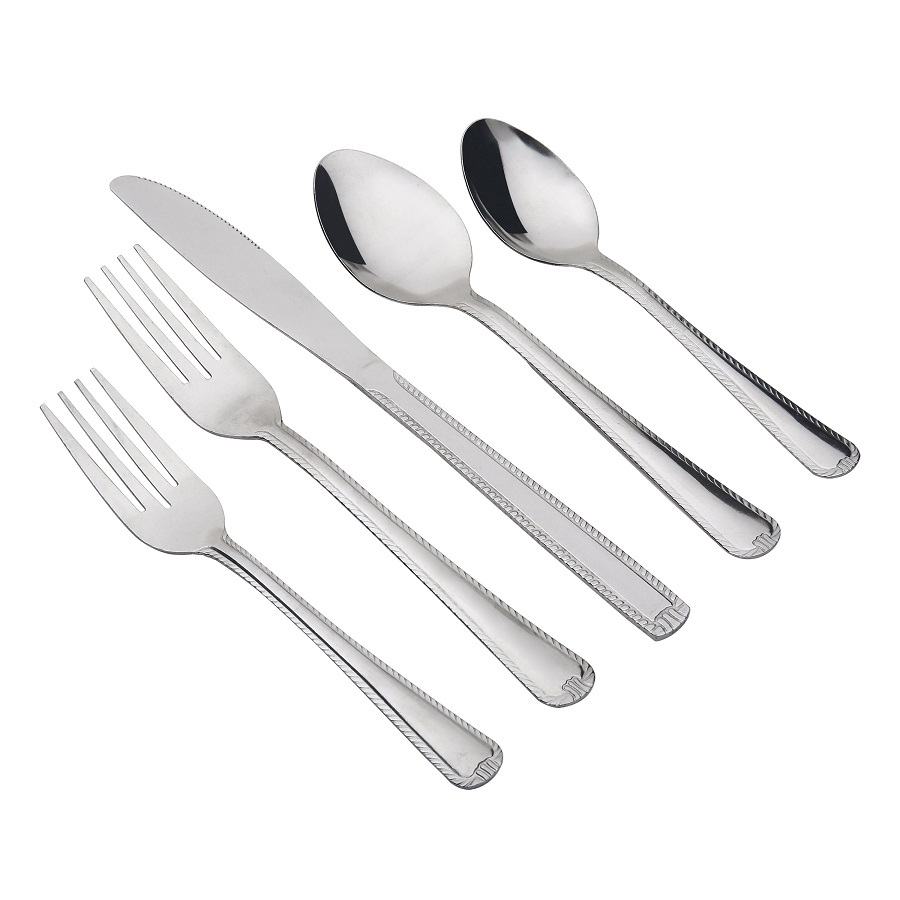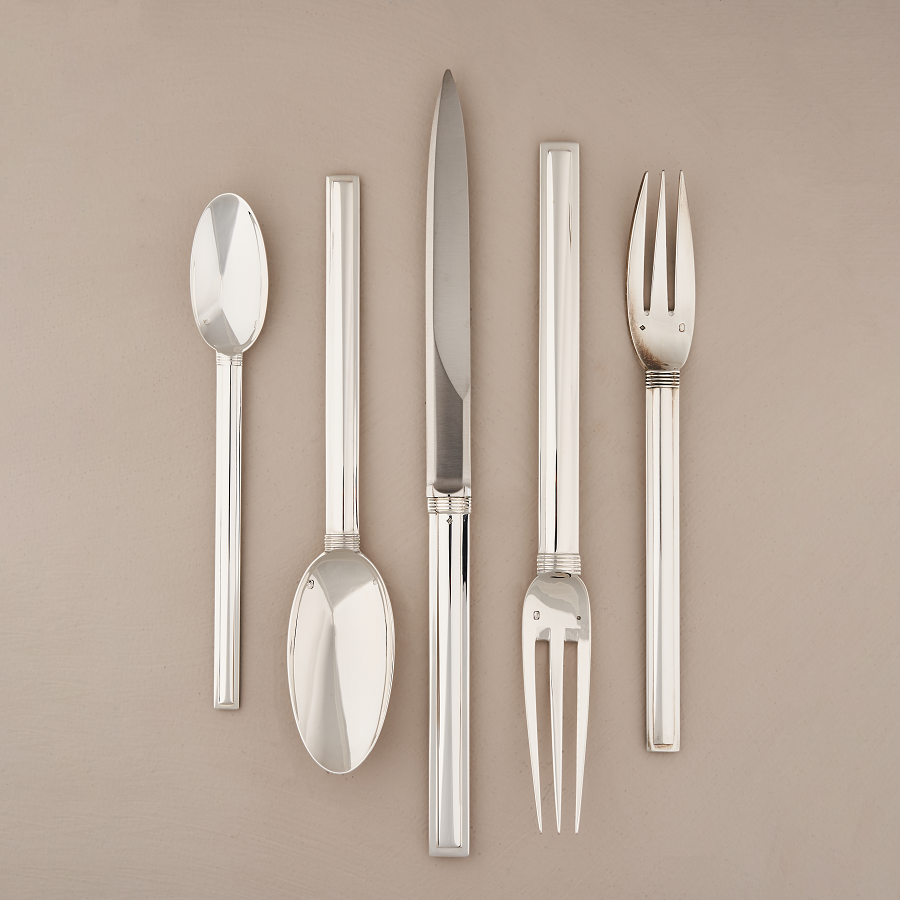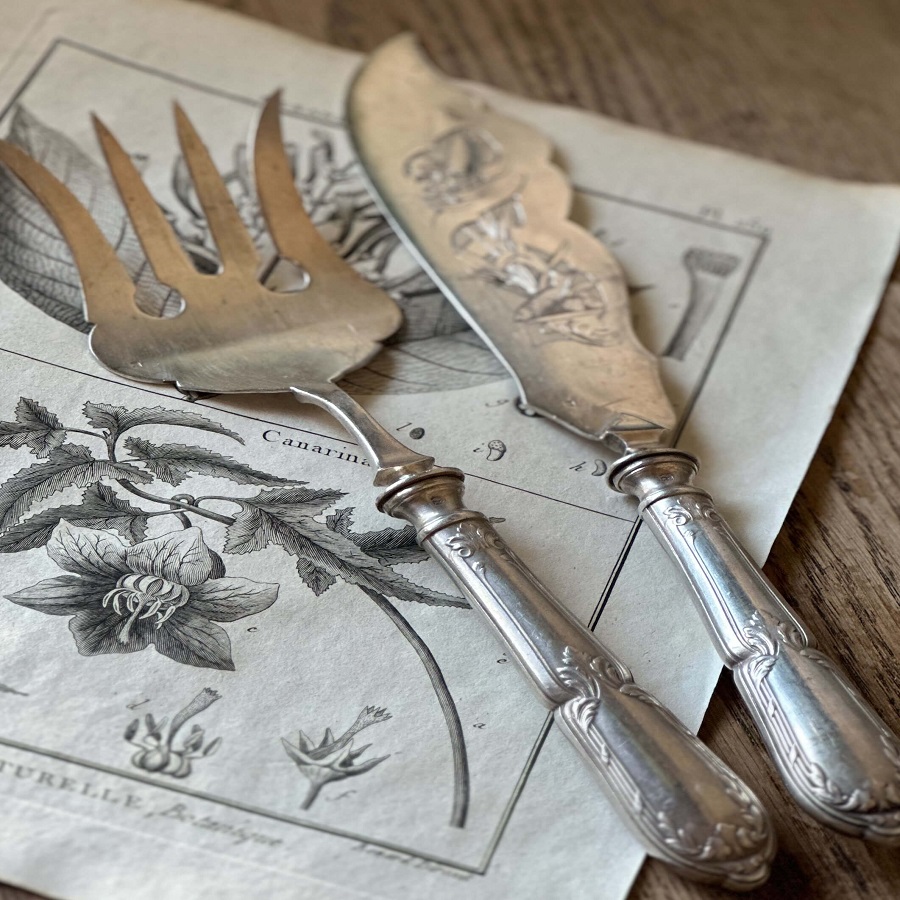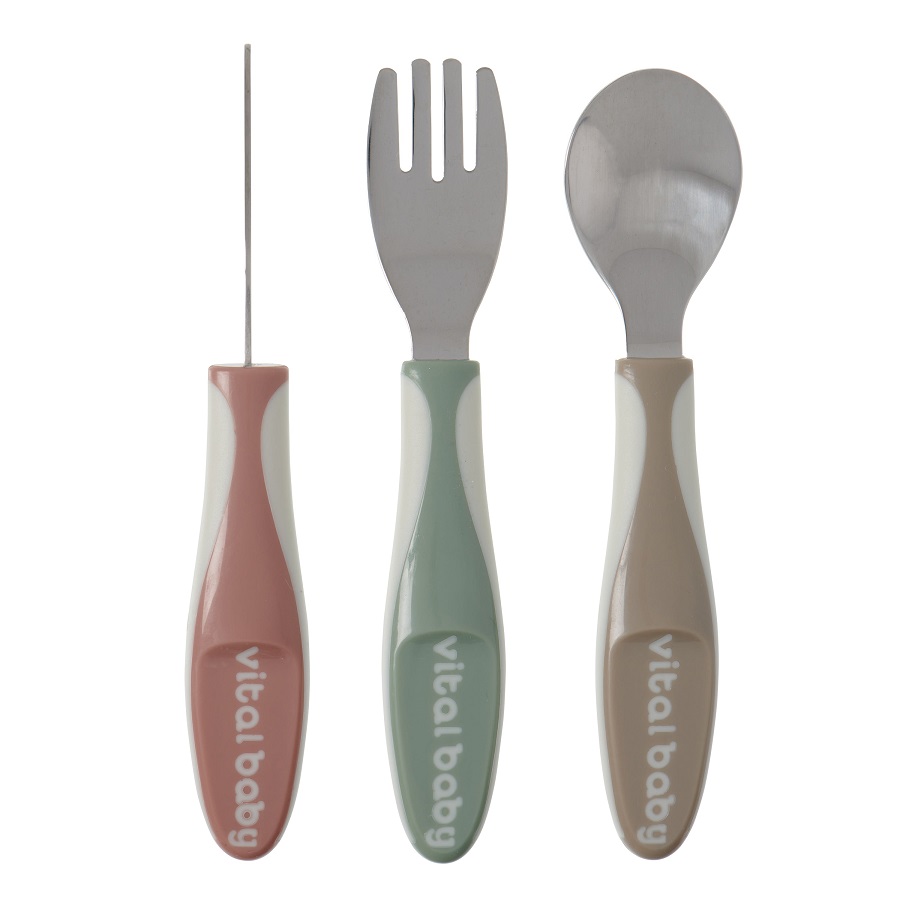The Importance of Proper Silver Cutlery Care
Proper silver cutlery care ensures lasting shine and durability. Silver cutlery, a valuable investment, requires regular maintenance to prevent tarnish and corrosion that detract from its beauty. Maintaining your silver can also prevent the need for costly repairs. Additionally, proper care ensures that your silverware remains safe to use for dining, as tarnished cutlery can sometimes contain harmful substances.
Regular cleaning and proper storage not only preserve the aesthetic appeal but also maintain the functional integrity of your silver cutlery. It maintains its value, both monetarily and as a potentially heirloom piece that can be passed down through generations.
By caring for your silver cutlery, you also uphold tradition and elegance associated with fine dining experiences. It’s about preserving a legacy that speaks volumes about hospitality and refinement in your home. Simple steps taken to care for your silver cutlery can yield long-term benefits, ensuring that each meal is graced with lustrous utensils that reflect your attention to detail and respect for fine craftsmanship.
 Initial Cleaning: Preparing Your Silverware for Maintenance
Initial Cleaning: Preparing Your Silverware for Maintenance
Before you move to the daily care routine, it’s essential to perform an initial cleaning of your silver cutlery. This first step lays the groundwork for effective maintenance and ensures that your silverware is free from any pre-existing tarnish or dirt. Here’s how to start:
- Gather Your Supplies: You’ll need mild dish soap, warm water, a soft sponge, and a soft cloth for drying.
- Warm Soak: Submerge your silver cutlery in a container of warm, soapy water. This will loosen any dirt and grime.
- Gentle Scrubbing: Using the soft sponge, gently scrub your silverware. Avoid using anything abrasive that could scratch the surface.
- Rinse Thoroughly: Rinse each item under warm running water to remove any soap residue, taking care not to leave any spots.
- Dry Immediately: With a soft cloth, promptly dry each piece to prevent water spots. Never leave silver cutlery to air dry, as it could lead to tarnishing.
- Inspect for Tarnish: Check each piece for any remaining tarnish. If tarnish is present, use a specialized silver polish to restore its shine.
Performing this initial cleaning is critical as it prepares the silver cutlery for regular upkeep. With a clean baseline, ongoing care becomes much more straightforward and effective. Now that your silverware is properly cleaned, you can move on to establishing a simple yet effective daily care routine to keep your silver shining day after day.
Daily Care Routine for Silver Cutlery
Adopting a daily care routine is key to preserving silver cutlery’s shine and functionality. Simple yet effective habits can prevent tarnish and delay the need for deep cleaning and polishing. Here are the steps you should include in your daily silver cutlery care routine:
- Rinse Right After Use: Immediately after dining, rinse your silver cutlery in warm water. This step removes any acidic food residues that may cause tarnishing.
- Wipe with a Soft Cloth: After rinsing, use a soft cloth to gently wipe each piece of silverware. This helps to prevent water spots and removes any remaining food particles.
- Proper Drying: Ensure all moisture is removed by thoroughly drying your silver cutlery with a dry, lint-free cloth.
- Quick Polish: For added shine, give your silver a swift buff with a microfiber cloth. This daily mini-polish can keep tarnish at bay.
- Storage: If you’re not going to use your silver cutlery immediately, store it in a dry place. A cutlery tray or fabric rolls made for silverware can help prevent scratches and tarnishing.
By following these steps each day, you can maintain the elegant appearance of your silver cutlery with minimal effort. Remember to handle your silverware with care to keep it looking its best for years to come.
Polishing Silver Cutlery: Products and Techniques
Polishing is a vital step in silver cutlery care. It brings back shine and protects against tarnish. However, you need the right products and techniques for effective results. Here’s what to do:
- Choose the Right Polish: Select a non-abrasive silver polish designed for cutlery. It should remove tarnish without scratching the surface.
- Use a Soft Cloth: Apply polish with a soft, lint-free cloth. Rub gently in a circular motion, following the grain of the silver.
- Rinse Off Polish: After polishing, rinse your silver cutlery under warm water. Remove all traces of polish to avoid residue build-up.
- Dry Thoroughly: Dry each piece with another clean, soft cloth. Make sure no moisture is left, as this can cause tarnish.
By using these products and techniques, your silver cutlery will regain its original luster. Remember to polish gently and avoid harsh chemicals. Regular polishing can make a big difference in maintaining your silverware’s beauty and value.
Storing Silver Cutlery to Prevent Tarnish
Proper storage of silver cutlery is essential to prevent tarnish. Here’s how to do it right:
- Wrap Each Piece: Use anti-tarnish cloth to wrap each piece of silver cutlery. This prevents exposure to air.
- Use Silver Cloth or Rolls: Store your cutlery in a drawer lined with silver cloth or in fabric rolls. These materials absorb sulfur compounds in the air.
- Avoid Rubber Bands: Don’t use rubber bands to keep groups of silverware together. Rubber can cause tarnish and corrosion.
- Airtight Containers Work Best: If possible, keep your silver cutlery in airtight containers or zippered bags. Reduce air exposure to a minimum.
- Silica Gel: Include silica gel packets in your silverware drawer. They help control moisture.
- Separate from Other Metals: Store silver separately from other metals. Contact with different metals can speed up tarnishing.
- Choose a Cool, Dark Location: Store your cutlery in a place with low humidity. Light and heat can accelerate tarnish formation.
By following these steps, you can greatly diminish the possibility of tarnish. It keeps your silver cutlery bright and ready for use. Remember, caring for silver is an ongoing process. Invest time in proper storage to avoid frequent polishing later on.
Professional Care: When to Seek Expert Help for Your Silverware
Seeking professional care for your silver cutlery is sometimes the best choice. Look for expert help if:
- Heavy Tarnish: If tarnish is thick and doesn’t come off with home remedies or products, it’s time for a professional’s touch.
- Damaged Pieces: When silverware has dents, bends, or broken parts, skilled silversmiths can often repair them.
- Valuable Antiques: If your cutlery is an antique or heirloom, a specialist should handle the cleaning. They know how to preserve its value.
- No Results from Polishing: When repeated polishing does not restore the shine, experts have tools and methods that can.
- Desire for a Protected Finish: Professionals can apply a tarnish-resistant finish that’s harder to do at home.
- Lack of Time or Confidence: If you’re unsure or too busy, an expert can ensure the job is done right.
Professionals have the right skills and chemicals to care for your silver without damage. They can also offer advice on maintenance and prevention strategies. Don’t hesitate to reach out when your silverware needs that expert touch.
Home Remedies VS Commercial Products for Silver Care
When it comes to taking care of silver cutlery, you have two options. Home remedies are often gentle and inexpensive. Meanwhile, commercial products provide a quick and powerful solution. Understanding the pros and cons will help you choose the right method for your silverware.
Home Remedies for Silver Care
Home remedies can be effective for light tarnish and regular maintenance. They are readily available and can be less harsh than commercial options.
- Baking Soda Paste: Create a paste with baking soda and water. Apply gently, then rinse off.
- White Vinegar Soak: Soak your silver in a mix of vinegar and baking soda. This lift tarnish after some time.
- Toothpaste: Use a pea-sized amount of toothpaste. Rub onto the silver, then rinse and dry thoroughly.
Remember, home remedies may require more effort and time than commercial products. They might not be as effective for heavily tarnished cutlery.
Commercial Products for Silver Care
Commercial products are specially formulated for silver care. They often work faster and require less physical effort.
- Specialized Silver Polish: Specialized silver polishes remove tarnish quickly. Follow the instructions closely.
- Silver Wipes: Pre-moistened wipes are convenient for a quick polish.
- Silver Dip: Liquid solutions allow you to dip your cutlery for rapid tarnish removal.
Commercial products can sometimes contain harsh chemicals. Always use them in a well-ventilated area and wear gloves to protect your hands.
In conclusion, home remedies can be a good choice for those who prefer natural solutions and have the time. On the other hand, commercial products might be better for those looking for efficiency and have heavily tarnished items. Consider your cutlery’s condition and your personal preferences when deciding which method to use for caring for your silver cutlery.
The Do’s and Don’ts of Silver Cutlery Maintenance
Maintaining the elegance and shine of silver cutlery involves following some essential dos and don’ts. Abiding by these guidelines will keep your silverware in top condition, allowing you to enjoy its beauty at every meal. Here are the key points to keep in mind:
Do’s:
- Do Use Gentle Cleaning Products: Choose mild soaps and avoid harsh, abrasive cleaners that can scratch the silver.
- Do Polish Regularly: Implement a routine polishing schedule to maintain the silver’s luster and prevent tarnish.
- Do Dry Cutlery Immediately: After washing, promptly dry your silver cutlery to prevent water spots and tarnishing.
- Do Store Silver Properly: Keep silver cutlery in anti-tarnish cloth or airtight containers to minimize exposure to air.
- Do Handle with Care: Use a soft touch when cleaning and avoid using utensils as tools for non-dining purposes.
Don’ts:
- Don’t Let Silver Soak: Prolonged soaking can lead to corrosion and tarnish, so be prompt with your washing and drying.
- Don’t Use Toothpaste: Despite being a popular home remedy, toothpaste can be too abrasive for delicate silver surfaces.
- Don’t Wrap in Paper: Paper can contain sulfur compounds that encourage tarnish, so it’s best avoided.
- Don’t Dishwash Silver Cutlery: Dishwashers can be too harsh for silverware and cause damage over time.
- Don’t Ignore Tarnish: Address signs of tarnish immediately to prevent it from worsening.
By following these simple do’s and don’ts, you’ll keep your silver cutlery sparkling and preserve its quality for future generations to enjoy. Remember, silver cutlery is not just a utensil but a symbol of heritage and finesse in your dining experience.




